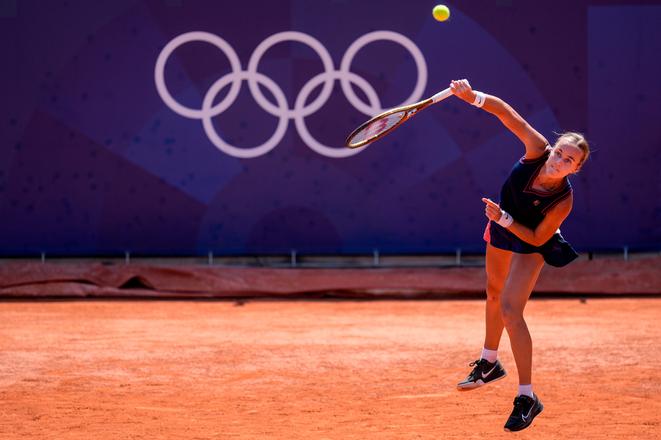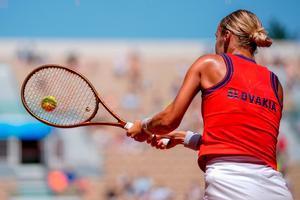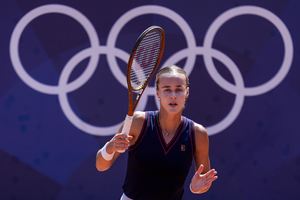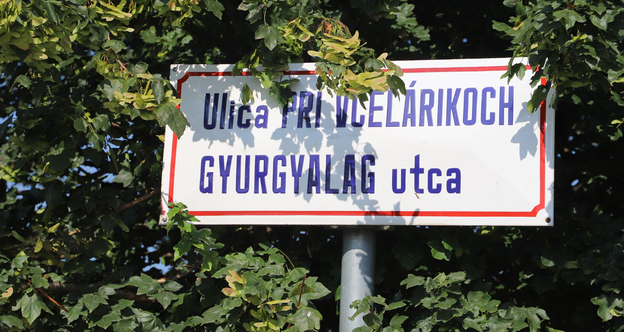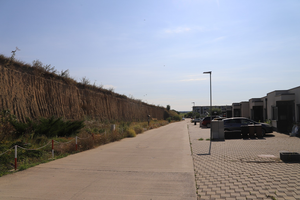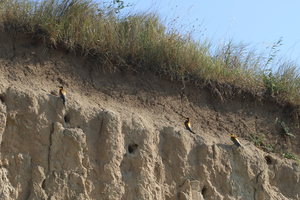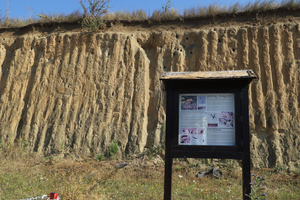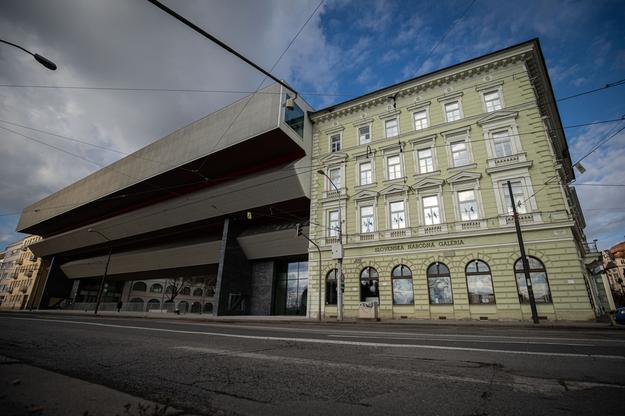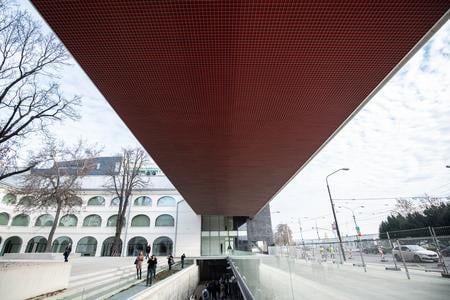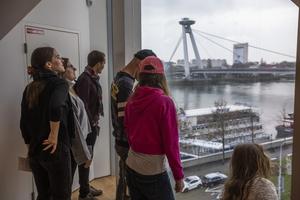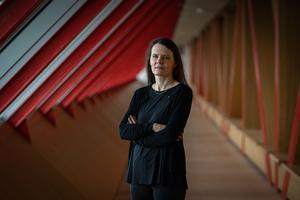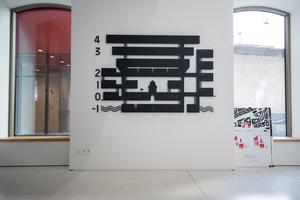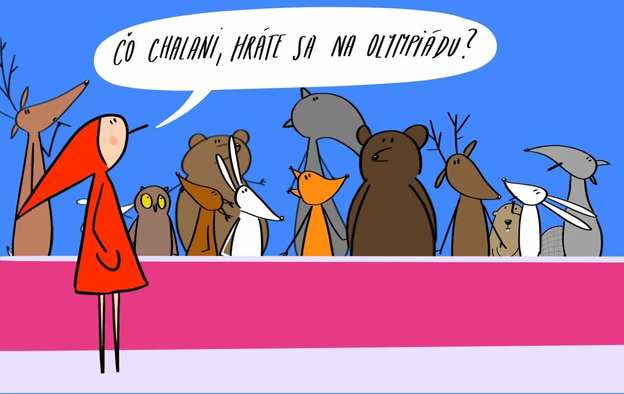Every week The Slovak Spectator brings you a selection of three short stories from across Slovakia from which pessimism and negativity are absent.
NY Times' The Athletic profiles emerging Slovak tennis star
Slovak tennis player Anna Karolína Schmiedlová has been attracting international attention in recent days after unexpectedly making it to the semifinals of the 2024 Summer Olympic Games in Paris.
After losing to Donna Vekić of Croatia in her semifinal last night, Schmiedlová is set to play for a bronze medal on Friday, August 2.
Apart from the Slovak media, she also captured the attention of foreign outlets. Most recently, an extensive profile of her was published by The Atlantic, a subscription-based sports journalism website that is part of The New York Times.
“She relies on defensive skills, clever angles and generally not making mistakes,” reporter Charlie Eccleshare wrote. “She is also extremely fit, outlasting and outmanoeuvring her opponents in Paris, the last two of whom were coming off both physically and mentally tiring Wimbledon runs, and competing in the doubles events at Roland Garros. She is serving more effectively than usual, and is displaying a mental toughness that she has not always possessed.”
Apart from her tennis career and performance at the 2024 Summer Olympics, the reporter also focuses on her comments on social issues and gestures she has shown over the years.
“Softly spoken and reserved, the bookish and academic Schmiedlová is one of the most outspoken players on tour when it comes to social issues,” Eccleshare reported.
He recalled that Schmiedlová wore a yellow and blue outfit to show her solidarity with Ukraine at last year’s French Open, where she played against Russia’s Veronika Kudermetova, and the support she has expressed for Slovakia’s NATO membership, which the reporter described as “a hugely polarising issue in the country”. He also recalled a 2018 post on Instagram, in which she wore a T-shirt with the slogan: “Why be sexist, homophobic or transphobic when you could just be quiet?”
“Schmiedlová’s relatively low profile had meant her advocacy has not been given the audience of players like [Naomi] Osaka or Coco Gauff,” Eccleshare wrote.
A street named after precious birds
The inhabitants of family houses situated just on the outskirts of the town of Senec, in western Slovakia, have unique neighbours.
Dozens of European bee-eaters as well as sand martins are nesting on a wall just across the street from some houses in the Nová Tehelňa housing estate. They have even lent their name to a nearby road: Street near the European Bee-eaters .
“Many people in Slovakia are happy when swallows fly into their homes and nest,” the Slovak Ornithological Society (SOS)/BirdLife Slovakia non-governmental organisation, which focuses on the protection and research of nature, especially birds and their biotopes, wrote on Facebook. “Well, within Slovakia only the residents of this street in Senec can say that bee-eaters nest directly under their windows and sit on their fences like sparrows.”
At first, the organisation was concerned about the plans to start the construction of the housing estate near the old nesting site of European bee-eaters, which was the only one near Senec. However, they found a solution in cooperation with the representatives of the investor, the local town authority and the CHKO Dunajské Luhy landscape area.
“The investor observed the agreed conditions, revitalised the nesting wall, left a free space in front of it and thus a very unique place was created,” SOS/Birdlife Slovakia added.
National Gallery celebrates
The largest gallery in Slovakia has recently celebrated its 76th birthday.
“In human years, many would say that our youth is behind us, but we are among the youngest national galleries in Europe,” the representatives of the Slovak National Gallery (SNG) wrote on Facebook, noting that the premises were opened only on July 29, 1948.
Over the years, the institution has become the guardian of the nation's cultural wealth in the field of historical as well as modern and contemporary art culture. Currently, the SNG’s collection fund comprises about 70,000 items, many of which are part of Slovakia's national cultural heritage. The gallery focuses on acquisition, research, protection, restoration and presentation of cultural heritage in all art disciplines.
The gallery comprises several buildings. In downtown Bratislava, it is situated in the recently reconstructed Baroque-era Water Barracks and the Esterházy Palace, but it maintains four other sites outside the capital: the Schaubmar Mill in Pezinok (temporarily closed), the Ľudovít Fulla Gallery in Ružomberok (temporarily closed), Zvolen Castle in Zvolen, and the Strážky Mansion in Spišská Belá-Strážky.
Five feel-good stories published by The Slovak Spectator to read:
Nuclear physicist Pavel Povinec, who has visited the sites of the Chernobyl and Fukushima nuclear disasters as well as major nuclear weapons testing sites, has set up a world-class lab in Bratislava. His research on radioactivity has earned him a team Nobel Prize for Peace.
Join our reporter on “a culinary journey through Ukrainian flavours”, and read about the Inside restaurant, situated on the edge of a small shopping precinct in the Ružinov borough in Bratislava.
Social media platforms are witnessing a resurgence in Slovak folk costumes, with several second-hand markets emerging for their sale and purchase.
Špania Dolina, one of the most popular tourist villages in the mountains of Banská Bystrica Region, has unexpectedly discovered a time capsule that had lain hidden in the decorative tip of a local church's spire – until it was recently struck by lightning.
If society in general, and the economy in particular, are to function properly, people also need to be in good health, both physically and mentally. Read what three companies in Slovakia are doing to help.
Political meme of the week
Caption: “Hey guys, are you competing at the Olympics?”
In this meme, artist Rosie Babicová, whose works can be found on the internet and social networks under the name Rosie Naive Art, alludes to the outrage expressed by some on Slovak-language social networks (and elsewhere around the world) at supposedly sacrilegious elements of the opening ceremony of the 2024 Summer Olympic Games in Paris. In fact, the organisers later explained, the tableau in question was inspired by a painting of Greek goods.
You can send me your tips on good news stories about Slovakia or funny memes at: radka.minarechova@spectator.sk. Thank you!


